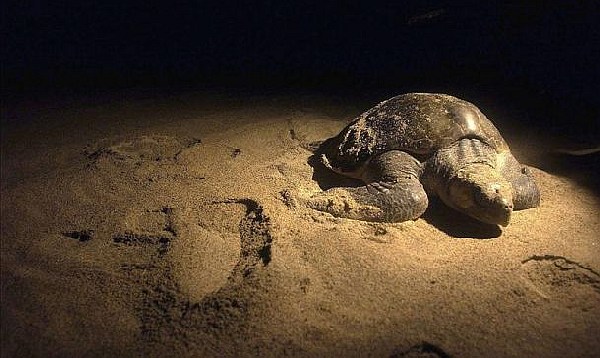Puerto Vallarta, Mexico - It's not just tourists that like the beaches of Banderas Bay. Sea turtles love them, too! The Bay of Banderas is the birthplace of thousands of Olive Ridley sea turtles and every year from June to September they return to the beaches on which they were born to lay their eggs.
Normally the eggs would incubate in the sand, but recreational activities on Vallarta-Nayarit beaches make them dangerous places for baby turtles, so the local hotel industry has been involved in sea turtle conservation and protection efforts for the last 38 years.
With the support of professional marine biologists and the Municipal Departments of Environment and Ecology, many Banderas Bay area resorts run turtle conservation and protection programs that give turtle-loving travelers an opportunity to take part in this unique educational vacation experience.
 |
Approximately 45 days later, the baby turtles emerge from their eggs. When the hatchlings are ready to be released, participants are invited to name the turtles, wish them luck and set them free in the sea at the edge of the resort's beach, where some of them will return a decade later to start the process all over again.
There are also a number of ecological groups in the greater Banderas Bay area that run turtle camps that give participants the opportunity to learn more about the Olive Ridley, while creating environmental awareness and encouraging others to help save them. Among them are: Campamentos Tortugueros Boca de Tomates, just north of Marina Vallarta; and, in the Riviera Nayarit, Grupo Ecologico de la Costa Verde's Marine Turtle Nursery.
During the summer and fall months, travelers can volunteer or go on tours of these nurseries and nesting sites to learn about the fascinating life cycle of sea turtles for just one night or by participating in a two-month-long volunteer project, subject to availability. For more information, visit project-tortuga.org.
Before the development of programs such as these, only 40% of the eggs that were laid along the shores of Banderas Bay survived, but today, thanks to programs such as these, almost 96% of the eggs deposited are incubated successfully.
Turtle-loving travelers heading to Puerto Vallarta this summer are invited to join one of the Banderas Bay region's many sea turtle protection programs, which help thousands of baby Olive Ridley sea turtles survive long enough to reach the sea.


